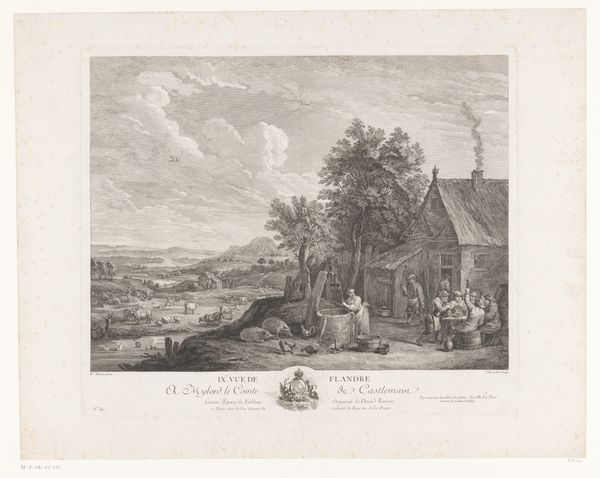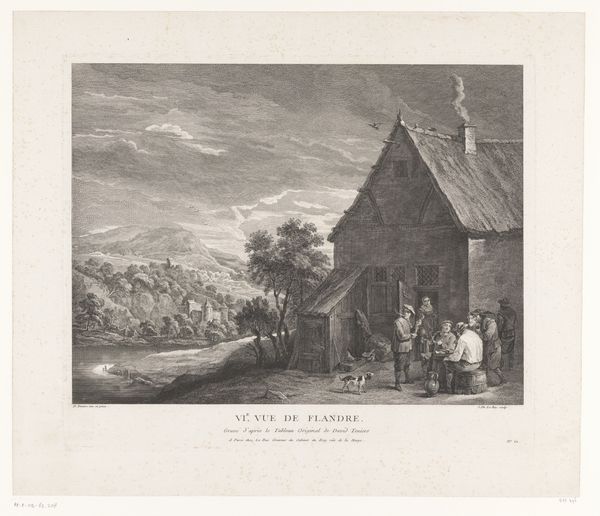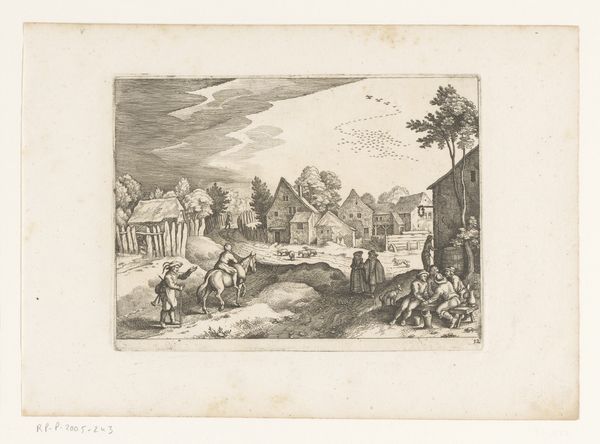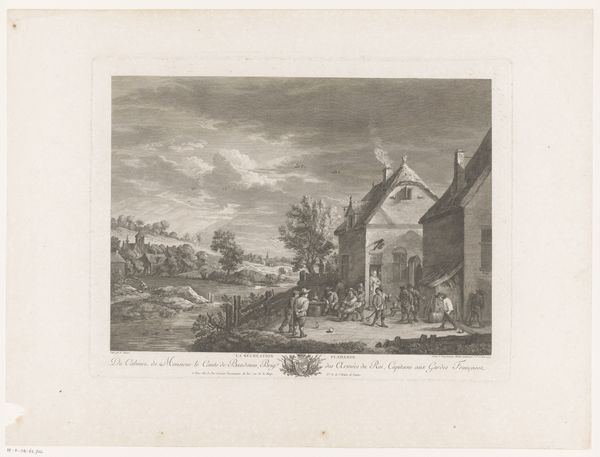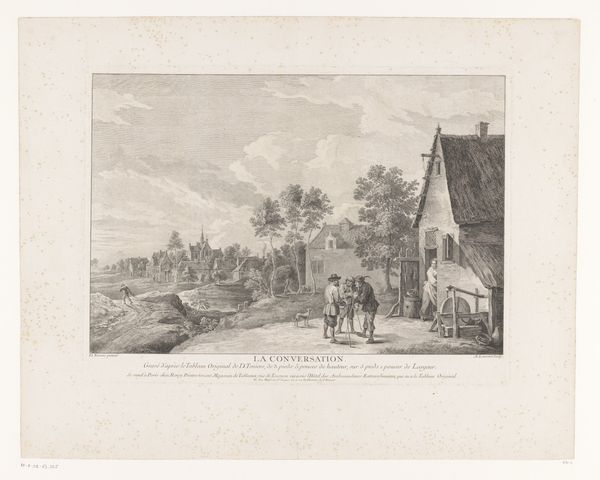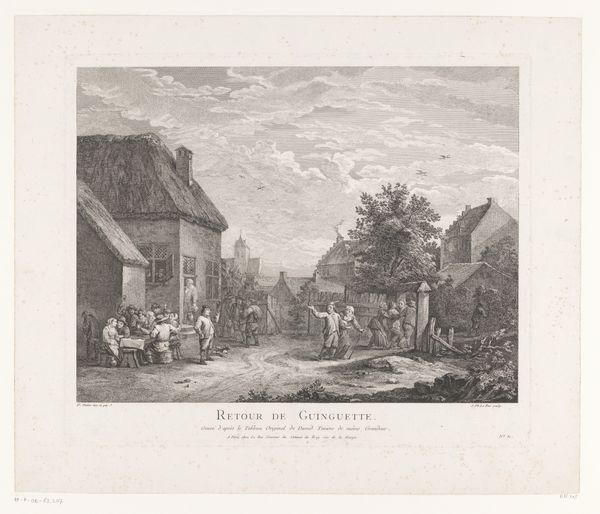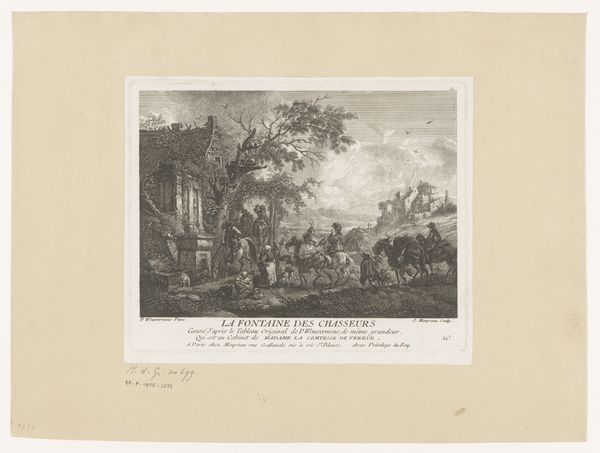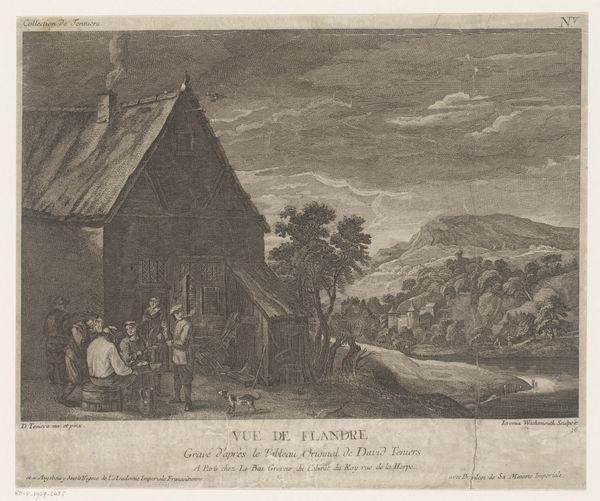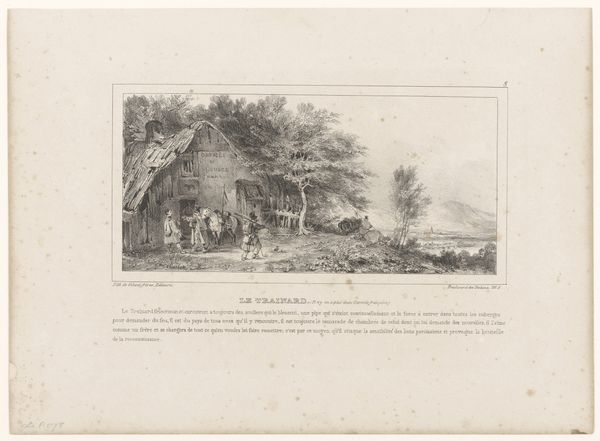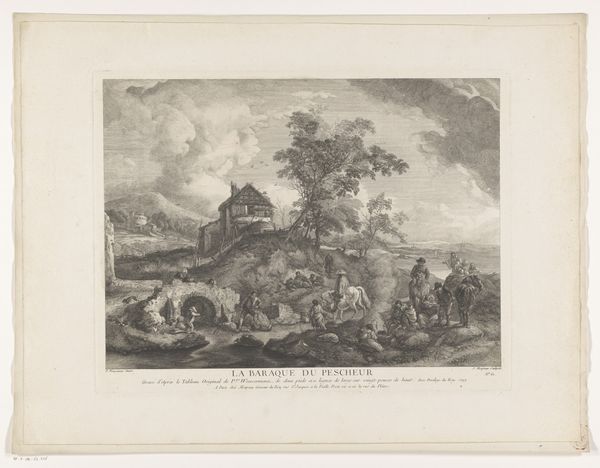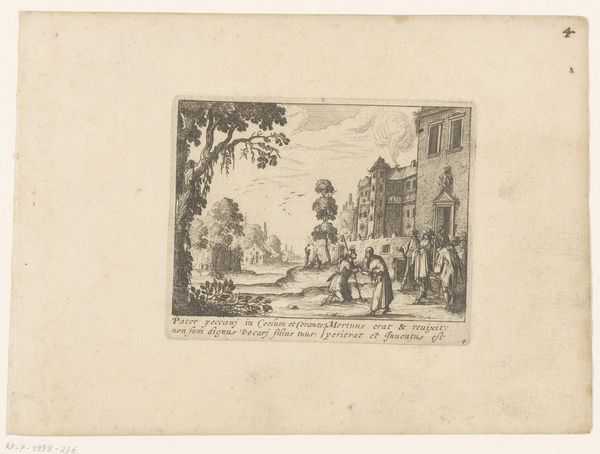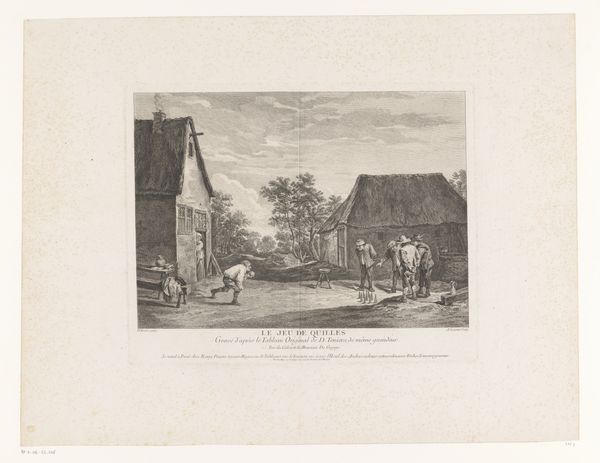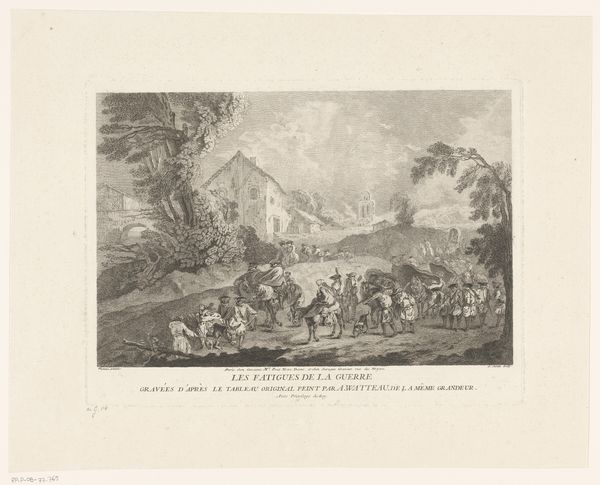
Dimensions: height 228 mm, width 268 mm
Copyright: Rijks Museum: Open Domain
Editor: So, this is "Dancing Couple with Bagpipe Player in Front of an Inn," an engraving by Louis Joseph Masquelier, sometime between 1751 and 1783. It's monochrome, almost a snapshot of everyday life. The dancers seem carefree, but I can’t help wondering about the lives beyond this tavern scene. What do you see when you look at it? Curator: I see a staged performance of social life, echoing back to a Dutch Golden Age fascination with genre painting. While seemingly innocent, let's consider who has access to leisure and joviality and who is excluded. Look at the bagpipe player, positioned as entertainment for the privileged. What commentary do you think Masquelier is offering here on class dynamics through his portrayal of this rural scene? Editor: That's a compelling point. I hadn't really considered the power dynamics at play. So the bagpipe player's inclusion might not be a celebration of rural life, but almost a critique of social inequalities? Curator: Precisely. It’s a crucial point to consider: Who are we seeing represented and who is behind the artistic production? Even the clothing styles depicted point to specific social strata. The 'carefree' couple's dance may be performed on the backs of others. Consider how frequently in art history marginalised individuals are used as symbols without any exploration of their individual realities. Editor: This has definitely shifted my understanding. It is a deceptively complex representation of social life. Curator: And understanding art's engagement with power and identity allows us to question not just the artwork, but also the systems it reflects and reinforces. It's about digging beneath the surface to find the buried narratives.
Comments
No comments
Be the first to comment and join the conversation on the ultimate creative platform.
